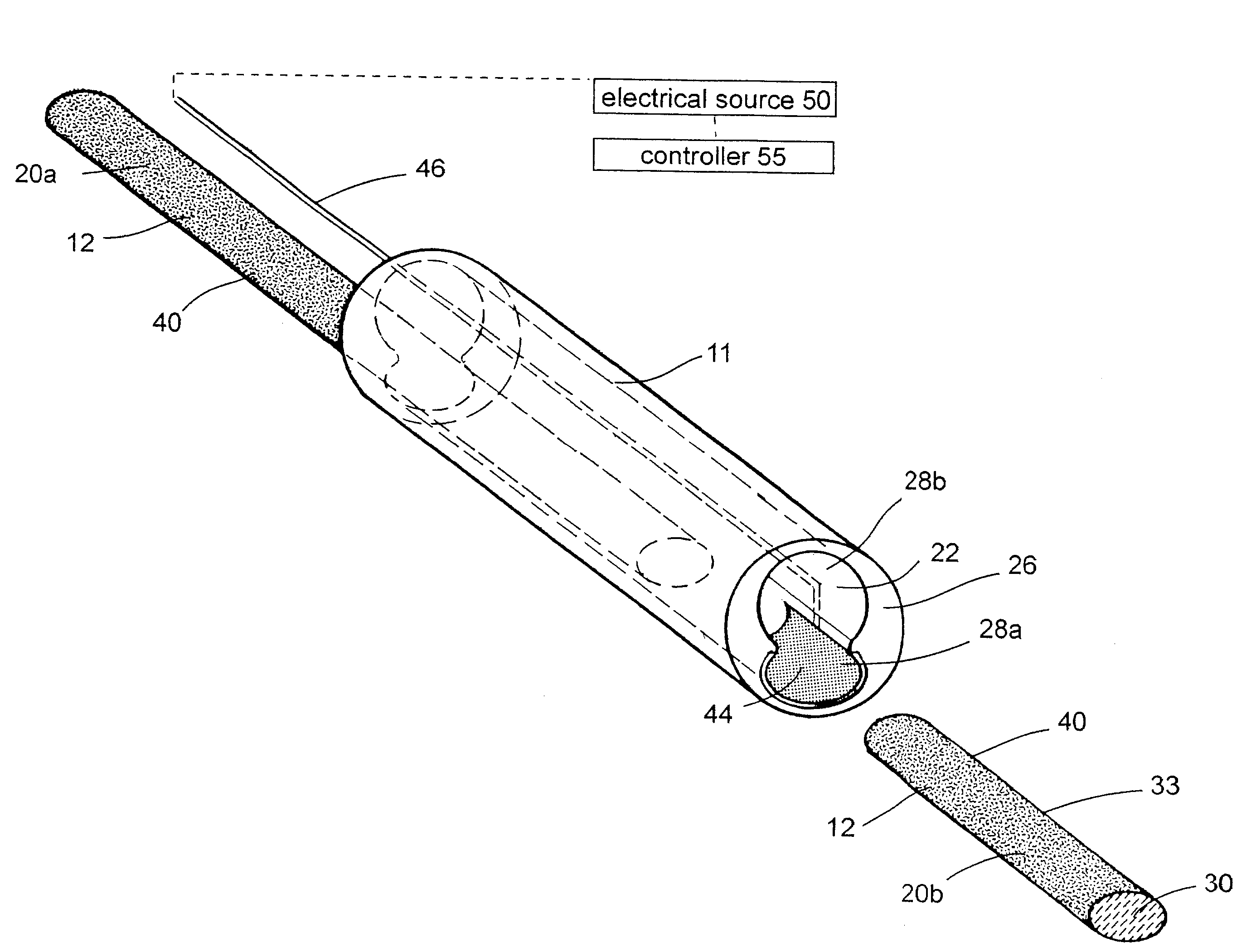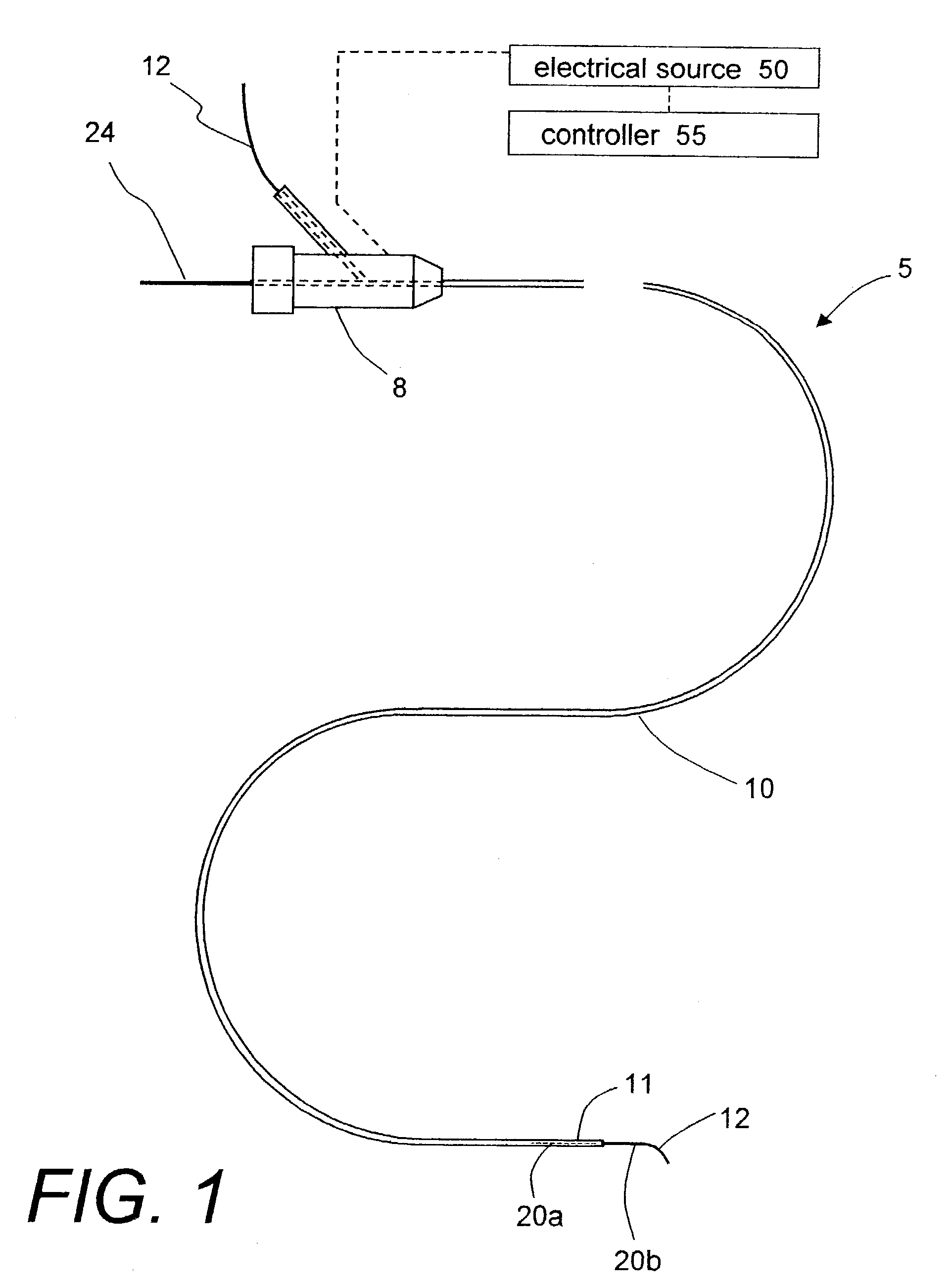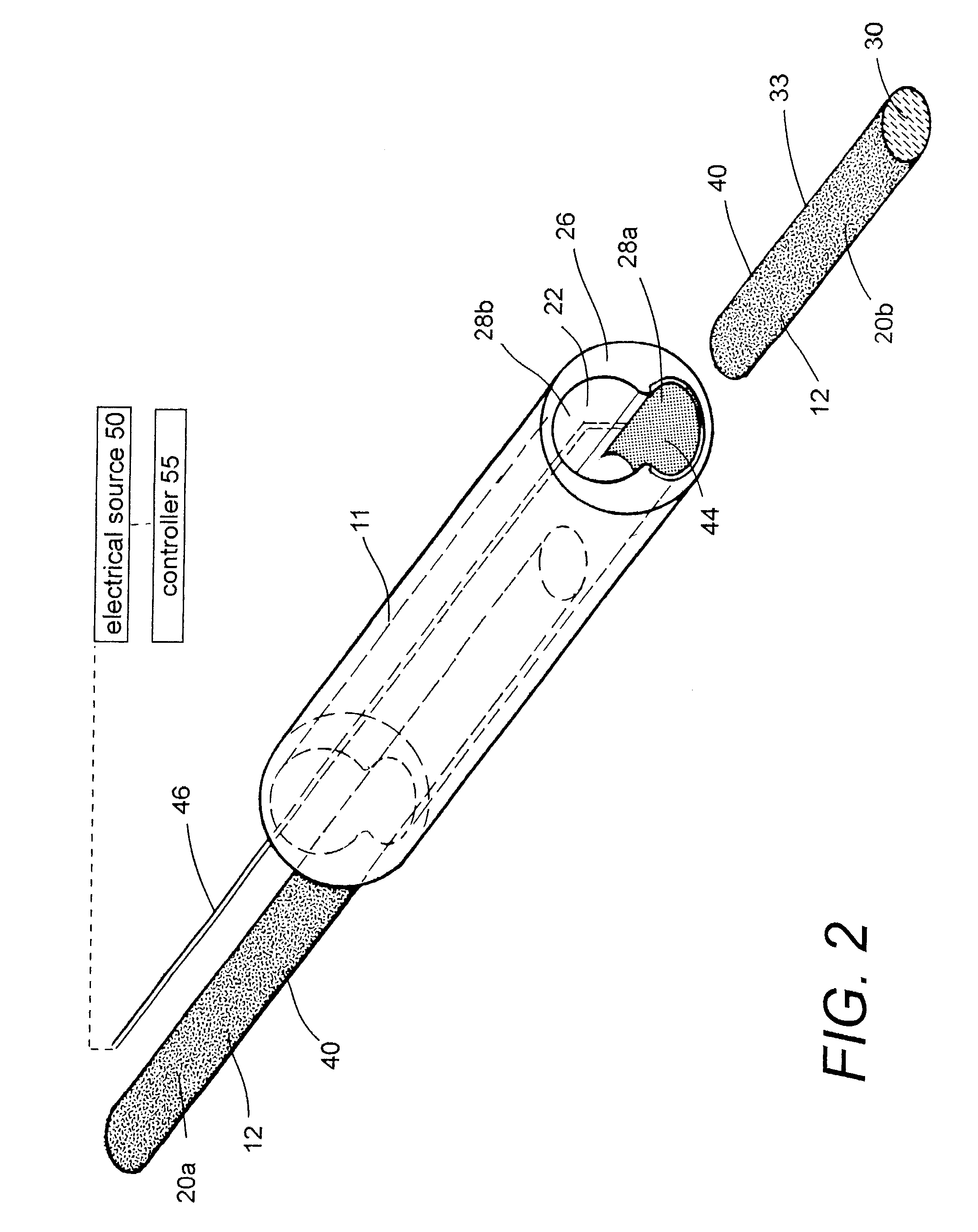Polymer matrix devices for treatment of vascular malformations
a polymer matrix and vascular malformation technology, applied in the field of medical systems and techniques for occluding aneurysms, can solve problems such as the formation of the coagulum layer about the deployed embolic elemen
- Summary
- Abstract
- Description
- Claims
- Application Information
AI Technical Summary
Benefits of technology
Problems solved by technology
Method used
Image
Examples
Embodiment Construction
[0047]1. Type “A” embodiment of vascular occlusive system. FIG. 1 shows an elevational view of a Type “A” catheter system 5 for occluding an aneurysm or other vascular malformation. The catheter system has a proximal handle or manifold 8 as is known in the art that is coupled to an elongate microcatheter sleeve 10. FIG. 2 is a cut-away view of the working end 11 of catheter sleeve 10 that illustrates the metallic-coated elongate thread or filament element 12 corresponding to present invention that can be passed axially through the cooperating microcatheter sleeve 10. The flexible embolic element 12 defines a proximal portion 20a still carried within catheter sleeve 10 and a distal thread portion 20b that is pushed outward of the catheter. In this exemplary embodiment, the embolic element 12 has an oval or flattened cross-section, but other cross-sectional shapes are suitable.
[0048]In this exemplary embodiment, an internal bore or passageway 22 within the catheter sleeve 10 is adapte...
PUM
 Login to View More
Login to View More Abstract
Description
Claims
Application Information
 Login to View More
Login to View More - R&D
- Intellectual Property
- Life Sciences
- Materials
- Tech Scout
- Unparalleled Data Quality
- Higher Quality Content
- 60% Fewer Hallucinations
Browse by: Latest US Patents, China's latest patents, Technical Efficacy Thesaurus, Application Domain, Technology Topic, Popular Technical Reports.
© 2025 PatSnap. All rights reserved.Legal|Privacy policy|Modern Slavery Act Transparency Statement|Sitemap|About US| Contact US: help@patsnap.com



